I’ve Lived At Changi Court For 5 years And Now Rent It Out: Here’s My Personal Review
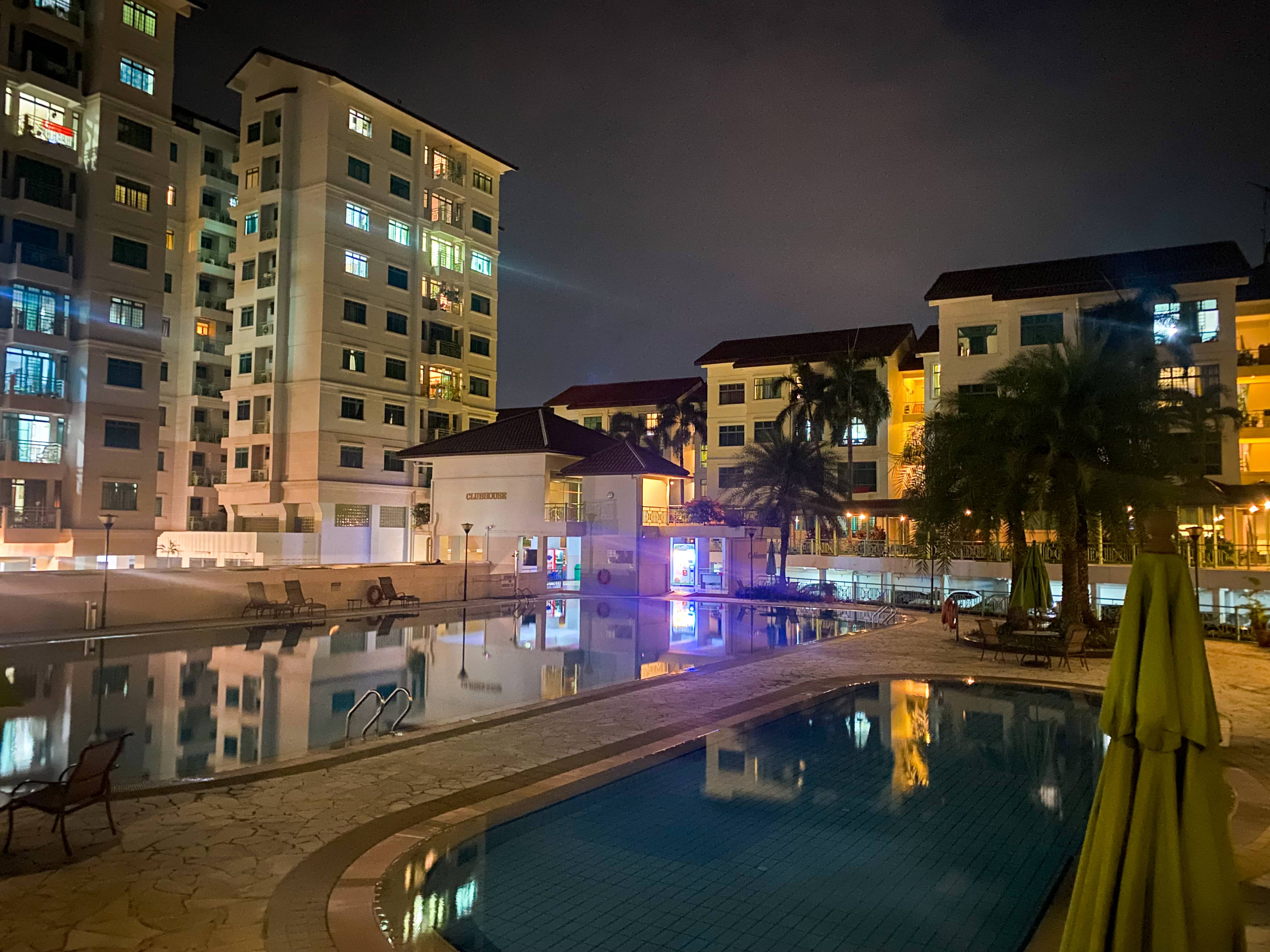
Get The Property Insights Serious Buyers Read First: Join 50,000+ readers who rely on our weekly breakdowns of Singapore’s property market.
A seasoned content strategist with over 17 years in the real estate and financial journalism sectors, Ryan has built a reputation for transforming complex industry jargon into accessible knowledge. With a track record of writing and editing for leading financial platforms and publications, Ryan's expertise has been recognised across various media outlets. His role as a former content editor for 99.co and a co-host for CNA 938's Open House programme underscores his commitment to providing valuable insights into the property market.
Changi Court is getting on in years, and was built back in 1997 (although it is freehold, which mitigates some of the age issues). Over the years, this quiet condo has proven its rentability: first with the SIA Training Centre nearby, and then later the opening of SUTD. It’s also common to find tenants who work at the airport or Changi Business City. Transactions at Changi Court are few and far between, and this is a small condo with just 297 units. But at around $1,118 psf (as of July 2022), this may be one of the more affordable – if old – alternatives for those who want a larger unit.
We spoke to T (*not his real name for privacy reasons), who lived in Changi Court for five years before turning it into a rental unit:
How does Changi Court compare to other estates?
T says that it was a passing conversation, which first got him to think about Changi Court:
“I had a friend who mentioned the SIA Training Centre, which she was attending at the time. She and a few others were pooling their money to rent a unit at Changi Court, and it clicked in my brain: I had the cash right now, nothing else looked healthy to invest in, why not buy a home that I can also rent out one day?”
(Note: 2008/9 was when the Global Financial Crisis occurred)
While T was already thinking of Changi Court, he did consider a few other locations as well. However, he had two requirements:
The first was that the condo had to be a resale unit, as T wanted to move fast. He was living in a flat in Bedok Reservoir at the time, and also had a dog that was starting to annoy his grandmother (who also lived with him and his parents). T did intend to rent out the unit in the future, but first, it would be his home for a few years.
The second was that the condo had to be in the east. A dedicated east-ender, T says that: “Anything further than Paya Lebar is out of bonds; I will get totally lost.”
Cascadale
Cascadale is just next to Changi Court, so naturally, T checked it out first. For the units he viewed, he didn’t like the somewhat unusual layout (it was like an upside-down Y shape). He also felt that between the two, Changi Court was in better upkeep.

Modena
T usually hung out at Simei, so the area was familiar to him. The main attraction of Modena was a five-minute walk to Simei MRT and its nearby mall (Eastpoint); this is also on the prized East-West Line that can go to the airport or Raffles Place.
However, T didn’t like how densely packed the area was. Changi Court, while less accessible, is across from a low-density, landed area.
In addition, the specific unit he viewed had badly scuffed flooring, and the kitchen was in a poor state; one of the faucets was even broken off. As such, he felt it would have been too costly to fix up.
Eastpoint Green
This choice sparked an argument. T liked Eastpoint Green because it’s across from Changi General Hospital. He considered this a plus because hospitals provide a large potential tenant pool (a lot of hospital workers are foreigners). Second, his father worked at one of the food outlets in the hospital – so it was convenient for his father to just cross over the road to rest.
He was “voted down” by his parents regardless, even his father. They felt it was inauspicious for him to live so near the hospital.
The Eden at Tampines
T viewed this at the suggestion of a relative, who was also considering a unit there. He liked the facilities, which were newer and better maintained than Changi Court. However, he felt rentability was low, as there’s not much in the area besides residential.
In addition, The Eden at Tampines is a 99-year leasehold unit, whereas Changi Court is freehold.
What made Changi Court stand out from other choices?
Eventually, T circled back round to Changi Court. It helped that because his friend was already a tenant there, he had an inside view of what the management and neighbours were like. Being quite risk averse, T prefers to stick with what he knows for sure.
In addition, T was drawn by the notion of owning a freehold condo (but T admits that freehold status is no longer what he would consider important today, and he probably overemphasised it).
Here’s what convinced him:
Unit
T opted for a comfortably-sized, 1,389 sq. ft., four-bedder unit. T feels the decision to get a bigger unit stemmed from bad experiences, of a cramped space with family and a pet. He considers it one of the best decisions he’s made: “At today’s prices, I could never afford a unit this size; so I’m glad I got it when I could.”
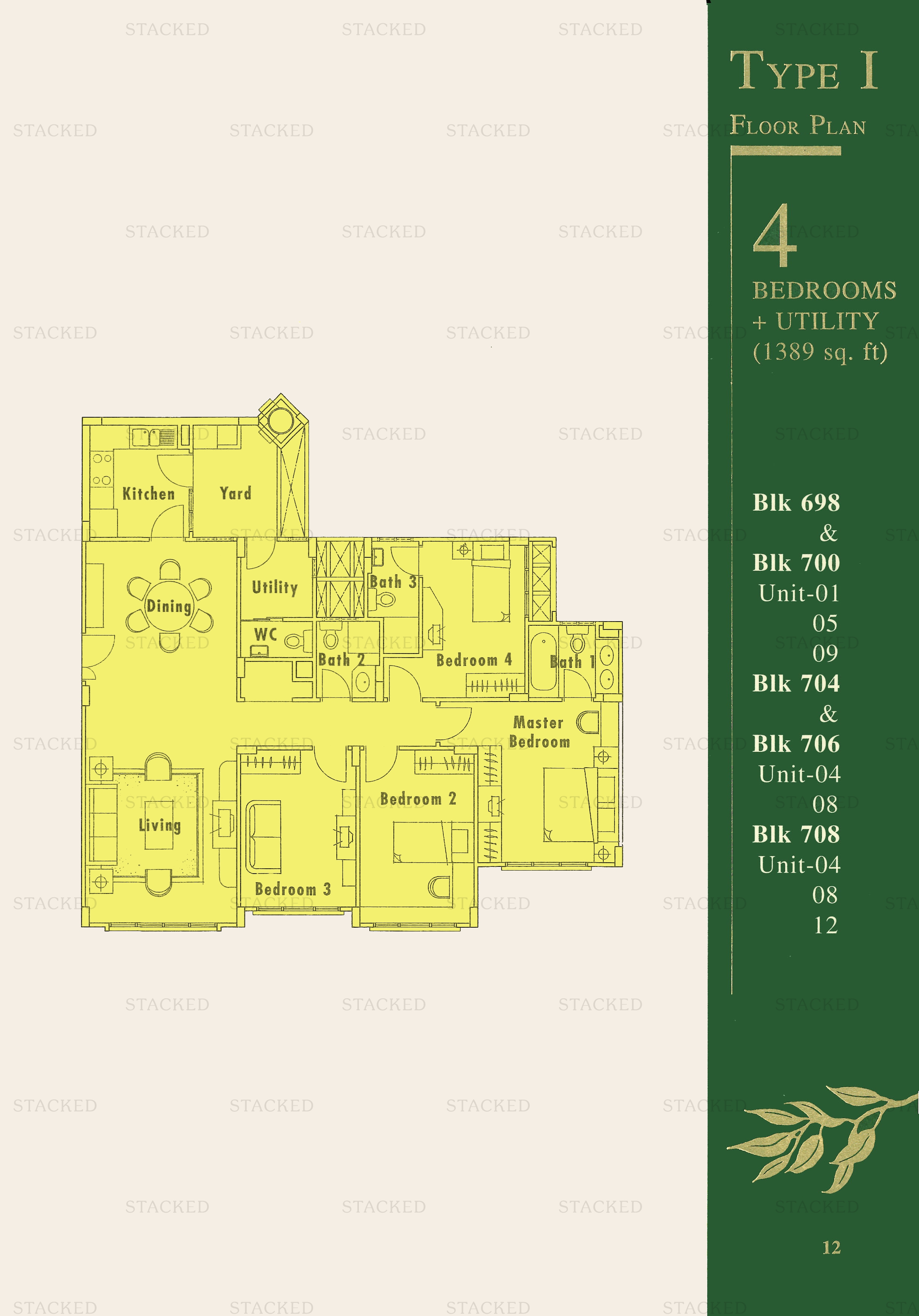
T didn’t initially feel comfortable with a ground-floor unit, as he felt noise would be an issue. However, his friends were also renting on the ground floor; they had told him the noise and foot traffic in the small condo were negligible. After repeated visits at different times, he confirmed this was the case.
What T liked most was the sizeable kitchen, which was large enough to eat in; and he was even able to put in another dining table in the service yard. Plus, the utility room next to the service yard had an attached toilet; T says it ended up becoming his dog’s private suite.
“It was also practical,” he says, “As that’s the toilet I would use for her baths, and I could keep her toys and things in the utility room.”
Fittings
The unit came with high-end marble flooring, which was in excellent maintenance. There wasn’t even a need for a round of polishing when he took over (although he had to emphasise that renovators look after it).
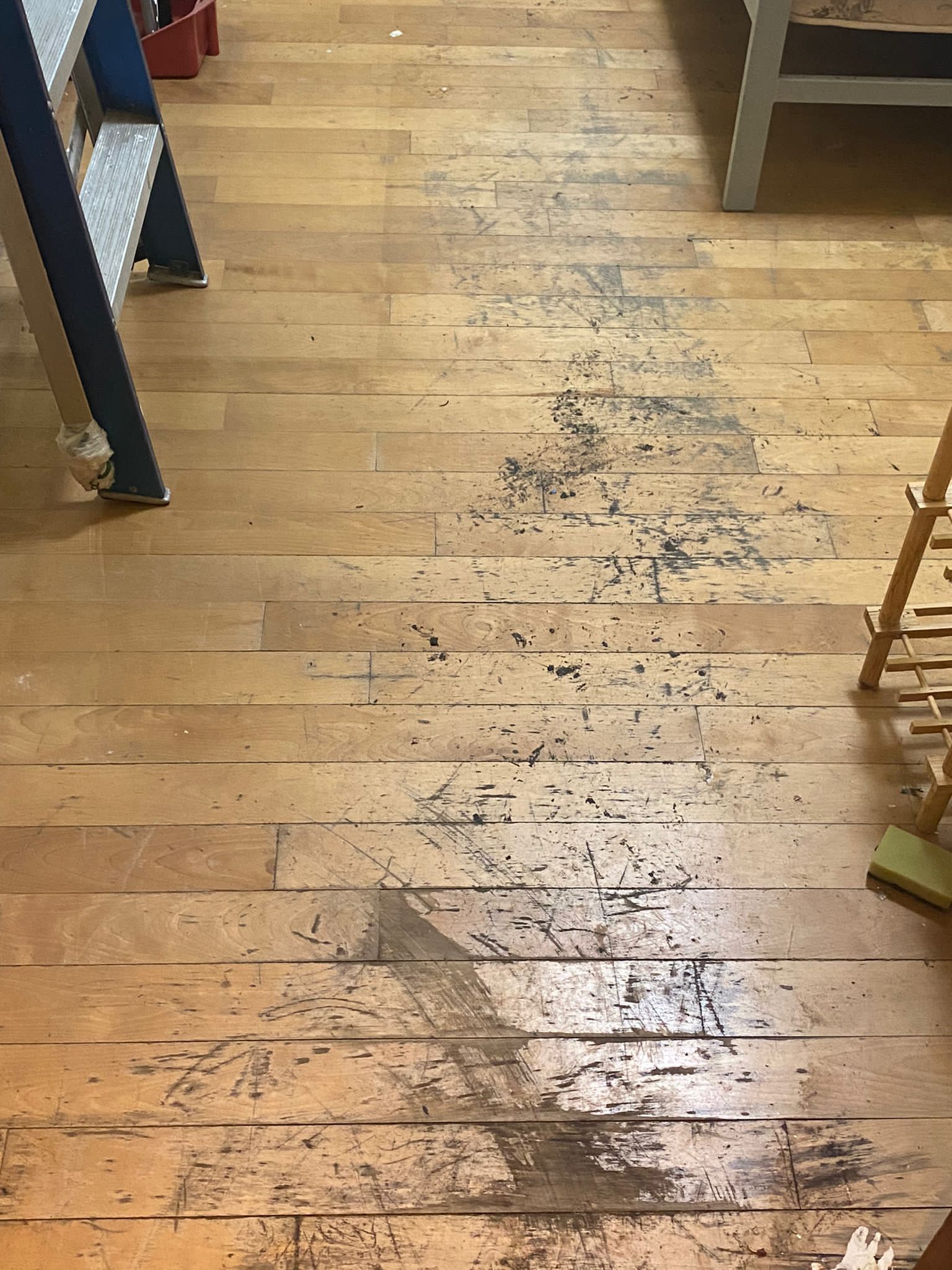
The parquet flooring for the bedrooms, however, hadn’t held up well. There were some parts where the wood was discoloured, especially in the master bedroom where the flooring met the bathroom. T had it covered over with textured vinyl.
The bathroom vanities had marble countertops, but unlike the floor, these were not in the best condition. Nonetheless, after some polishing, they looked presentable again.
One disappointment was that the kitchen had no water heater (this is a feature that’s not always found in older condos from the ‘90s).
Layout
There’s an immense impression of space when you first step in, in the joined-up dining and living room area. T liked the immediate sense of spaciousness, and the flexibility of the area. He eventually did away with the dining room (he ate in the kitchen) and turned it into sizeable library. When he moved out five years later, he converted it into a study area for student tenants.
The kitchen is enclosed from the dining area – T prefers this older style, compared to open concept kitchens. He says that: “People eating in the kitchen can talk and interact, and not disturb the people reading or working in the next room. This also turned out to be good for tenants.”
More from Stacked
JadeScape Condo Review: A Smart Home With Good Facilities
With a site area of close to 400,000 sqft, Jadescape is certainly for those who love big developments. Homeowners here…
There is some wasted corridor space, passing between two bedrooms and the master bedroom; T installed additional lights to prevent this area from being too dark.
Development
Changi Court is an old condo, dating all the way back to 1997. It’s quiet and offers a good degree of privacy: there are 297 sizeable units, and a bewildering huge parking space for such a small unit count.
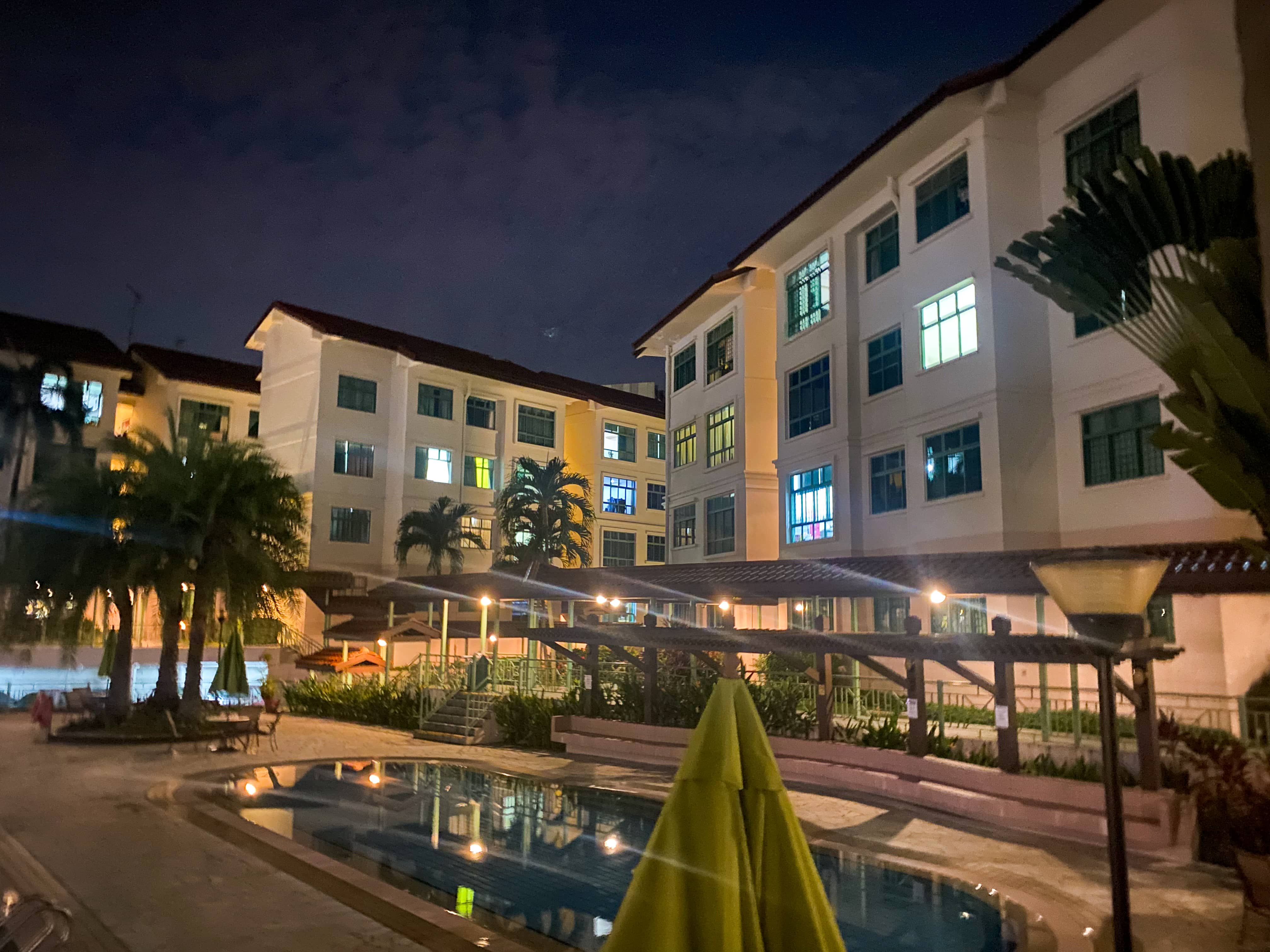
Its facilities include a pool, gym, clubhouse with multi-purpose hall, and BBQ and fitness areas. While old, the facilities are in a reasonably good state; and the Management Committee is quite proactive – T says they’re strict, and seem to text both landlord and tenant the moment they see garbage in the common areas. He considers this a net positive, given the number of tenants living in the project.
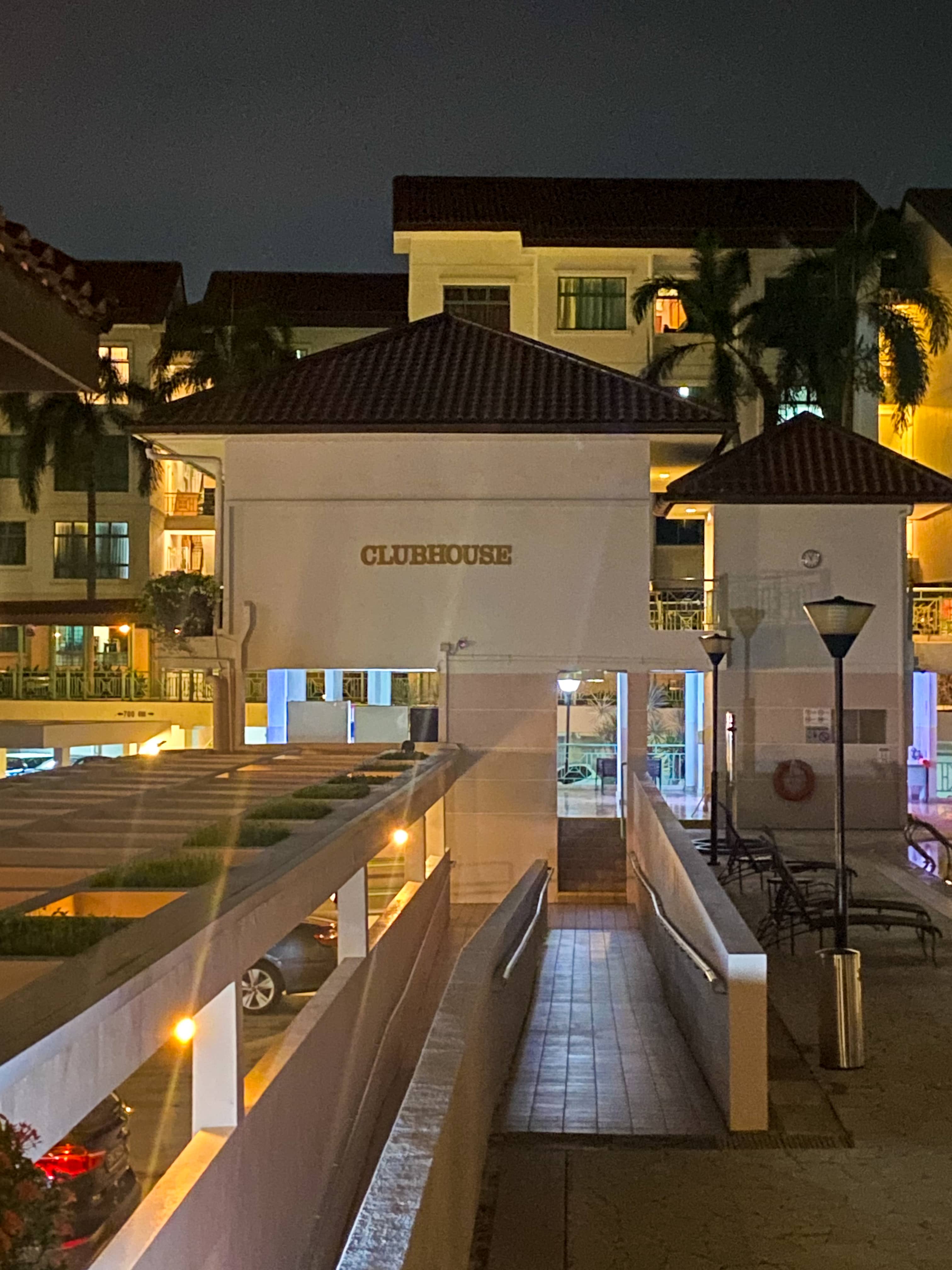
Due to the freehold status of Changi Court, there may be some who buy in expectation of this (as there’s now a university and train station nearby). But T claims that en-bloc efforts may face issues, with the airport being nearby.
(This could restrict the maximum height for redevelopment; but we haven’t been able to ascertain this for Changi Court).
T says maintenance fees per quarter are about $1,200, which is not uncommon for larger units.
Location
While Changi Court does face Upper Changi Road, traffic here is rarely heavy and noise pollution is minimal. Across the road, the view consists mainly of landed housing. During a morning jog or stroll, T says the area “doesn’t even feel like you’re in Singapore.”
Today the back half of the condo faces out at SUDT, but this doesn’t impair the view or the quiet.
The key attraction of Changi Court at the time was rental, for airport staff and those at the SIA Training Centre. Rentability has grown in strength over the years: today SUDT is right behind this condo, providing a pool of student renters, and the Upper Changi MRT station is only a five-minute walk away.
T says that in recent years, the bulk of tenants seems to be SUDT students, or expats working in the vicinity of Changi Business City.
Prices
T says that, way back in 2008, he bought his ground-floor 4-bedder for about $920,000. He feels he got lucky, as private home prices ramped up in the months right afterward (home prices shot up between 2009 to around 2013, when cooling measures first appeared).
What a typical Changi Court day looks like
“What I loved about living there was the long, quiet jogs in the morning,” T says. He would start with a jog or a stroll with his dog, along Upper Changi Road. As mentioned, traffic is surprisingly mild, and it’s mainly landed homes all the way.
When T got back, he would clean and feed his dog in her “private suite”, which is the utility room near the kitchen. It’s convenient in being both near its own toilet, as well as having enough room to store all the toys, dog food, etc.
“I will sometimes have a conversation with the upstairs auntie, who will stand just below my service yard and talk to me through the grille – she passes by on her way to the bus stop outside.”
T had enough room to place a large dining table in the service yard, where he usually ate his meals while taking in the fresh air.
“Most of the day I was in the dining room, which I converted into my library. The space was so big I could be quite lavish – I had floor-to-ceiling shelves with all my books. Being self-employed and mainly working from home, this place was my office.”
On occasion, T would invite business partners or clients over, and they would use the living room area as a meeting space. He opted not to put a TV here, and instead set it up like a small board room; there was more than sufficient space for a mini-pantry with tea, coffee, snacks, etc., where the TV would have been.
“On weekends, my mum and dad would come over, or sometimes my girlfriend and her little brother. They would stay the entire night, as there’s more than enough rooms.”
The master bedroom became the “real” living room, as the family and T would often cluster there to watch movies.
T also liked that the master bathroom was large enough to hold a tub. He prefers baths to showers, so he would typically treat himself to a long soak after work.
A look behind Changi Court’s façade
T says that one annoyance of Changi Court is the car park “shelter”. This is a grid pattern with large square openings.

“It’s very stupid,” he says, “Because what is the point of having that above your car? It doesn’t provide any kind of shelter. If you park your car under there, then when you walk to your car in the rain you need to open your umbrella. Why not just make it all sheltered?”
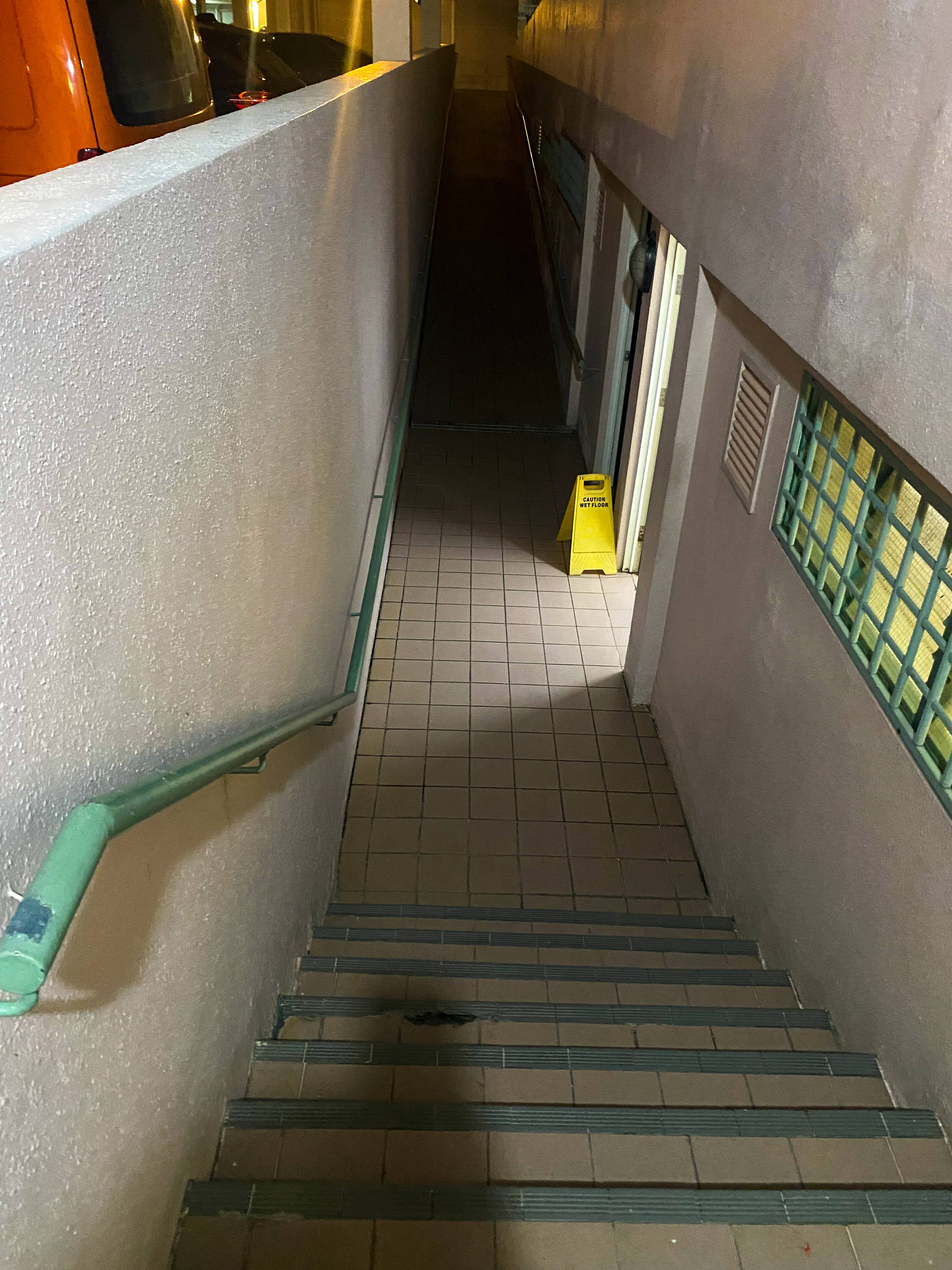
T also takes issue with the shower area for the pool, which gets dim. He notes that: “The area needs to be better lit, it looks seriously scary in the evenings, when only a little light gets in – one of my tenants was too afraid to use it after six or seven.”
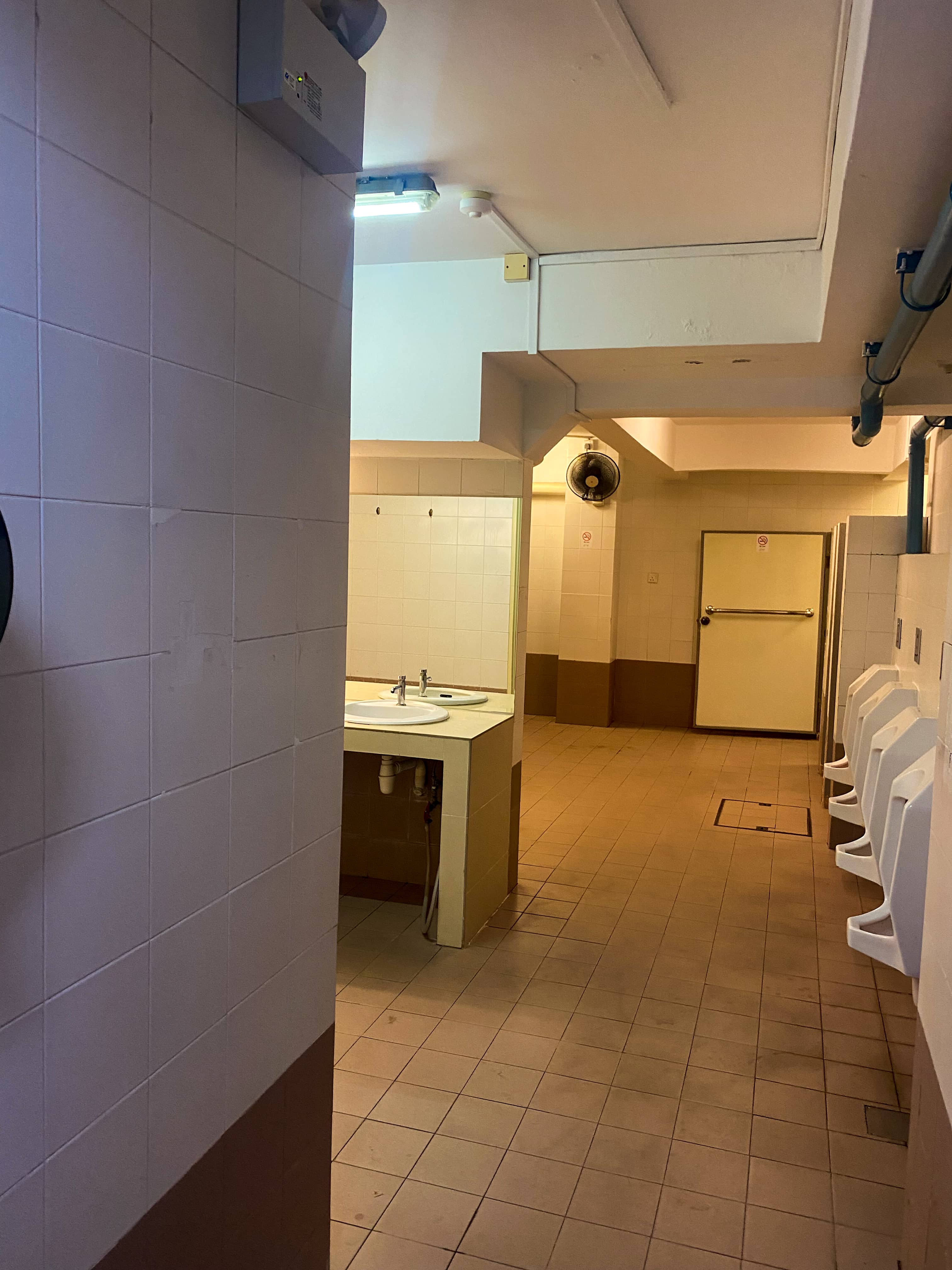
Another warning from T is that, even though the MRT is close by, many of the landed homes in the area wouldn’t want noisy malls nearby. This is peaceful, but also means fewer nearby amenities.
“When I lived there, the only nearby option for late night munchies was the petrol kiosk across the road. I got so sick of questionable curry puffs and Pokka sticks as the only supper option. Do be ready to stock up your fridge.”
In addition, note that while the MRT station is nearby, the walk is not sheltered; so do have an umbrella if it rains.
Staying at Changi Court

When we asked T about the best part of staying at Changi Court, he says it’s:
“Small unit count, coupled with large units; a very expensive combination in newer condos. For higher-floor units with a view, you can look out on a landed area without any buildings blocking your view. Also, if you want to be near SUDT or the airport area, this is a convenient place to stay.”
T also notes that, from a rental perspective, Changi Court was an excellent decision. He hasn’t had a single vacancy since he moved out, and his rental yield is “well above” the average of two to three per cent.
Interested to feature your review of your HDB or condo here? Fill in our form and we’ll be in touch.
If you’d like to get in touch for a more in-depth consultation, you can do so here.
Ryan J. Ong
A seasoned content strategist with over 17 years in the real estate and financial journalism sectors, Ryan has built a reputation for transforming complex industry jargon into accessible knowledge. With a track record of writing and editing for leading financial platforms and publications, Ryan's expertise has been recognised across various media outlets. His role as a former content editor for 99.co and a co-host for CNA 938's Open House programme underscores his commitment to providing valuable insights into the property market.Read next from Condo Reviews
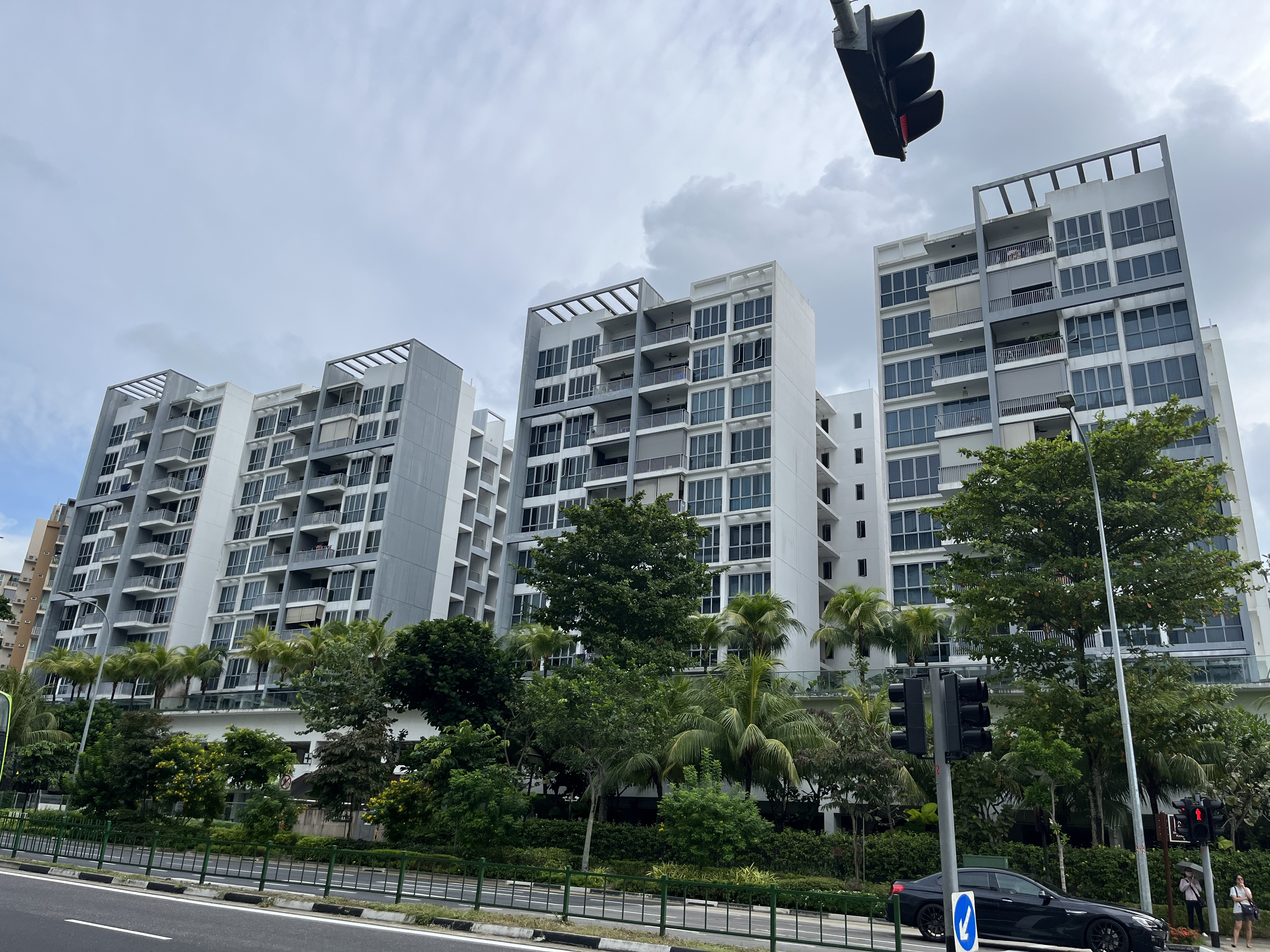
Condo Reviews I’ve Lived At Seastrand In Pasir Ris For 4 Months: Here’s My Review Of What It’s Like For A Couple
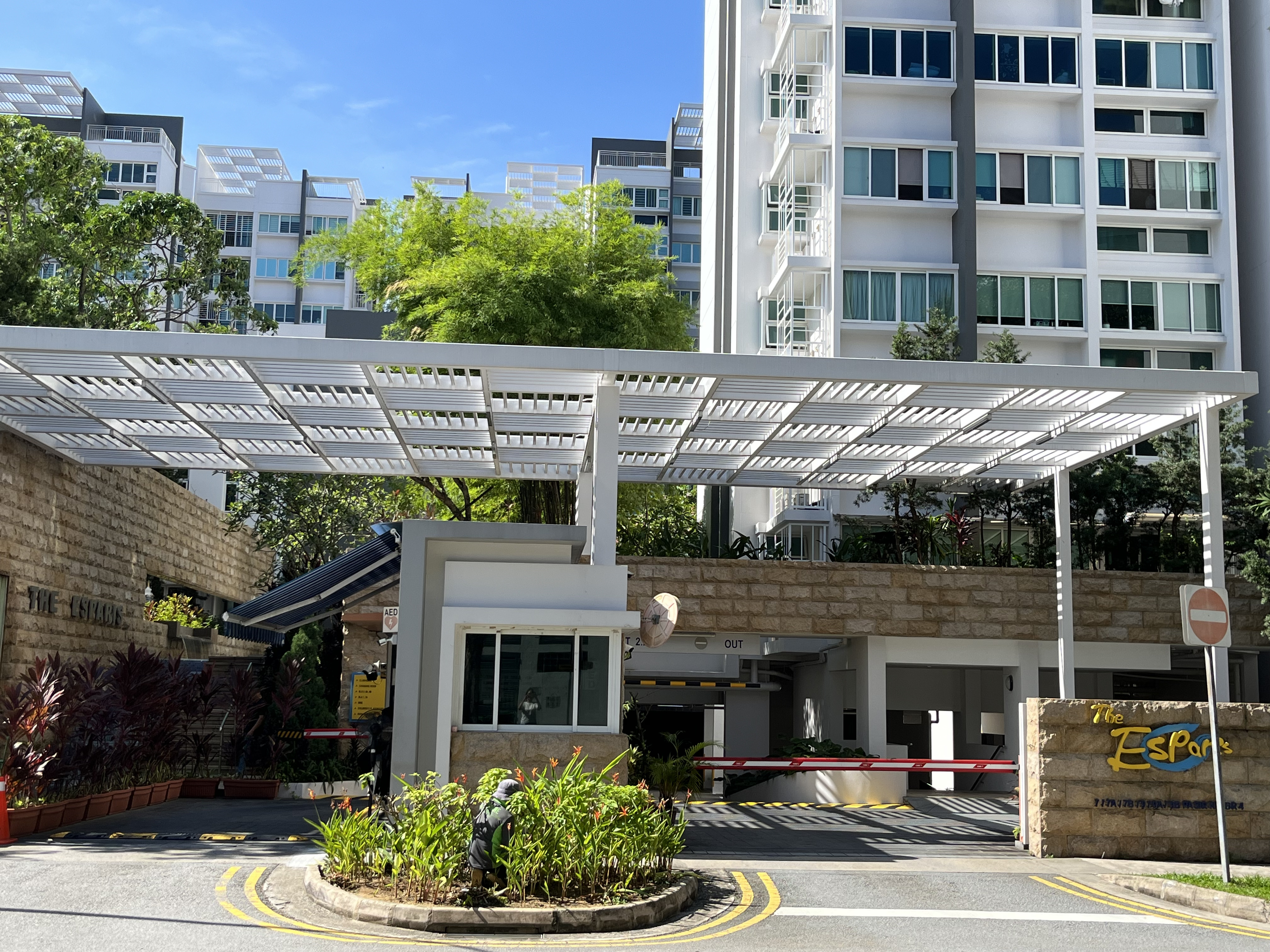
Condo Reviews I’ve Lived At The Esparis In Pasir Ris For 7 Years: Here’s My Review Of What It’s Like For a Multi-Gen Family
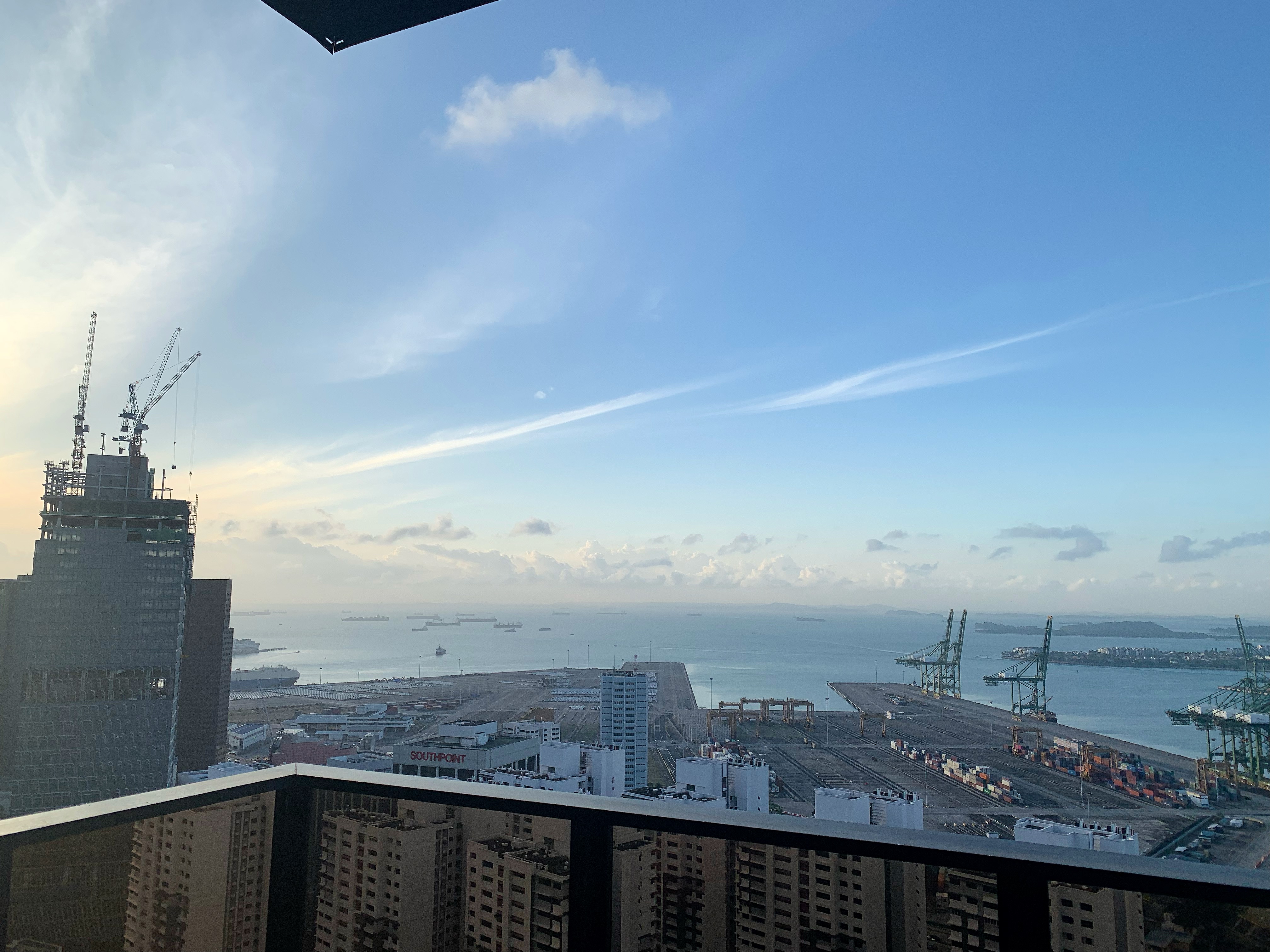
Condo Reviews I’ve Lived At Sky Everton For 4 Months: Here’s My Review Of What It’s Like To Live In A New Condo In The City
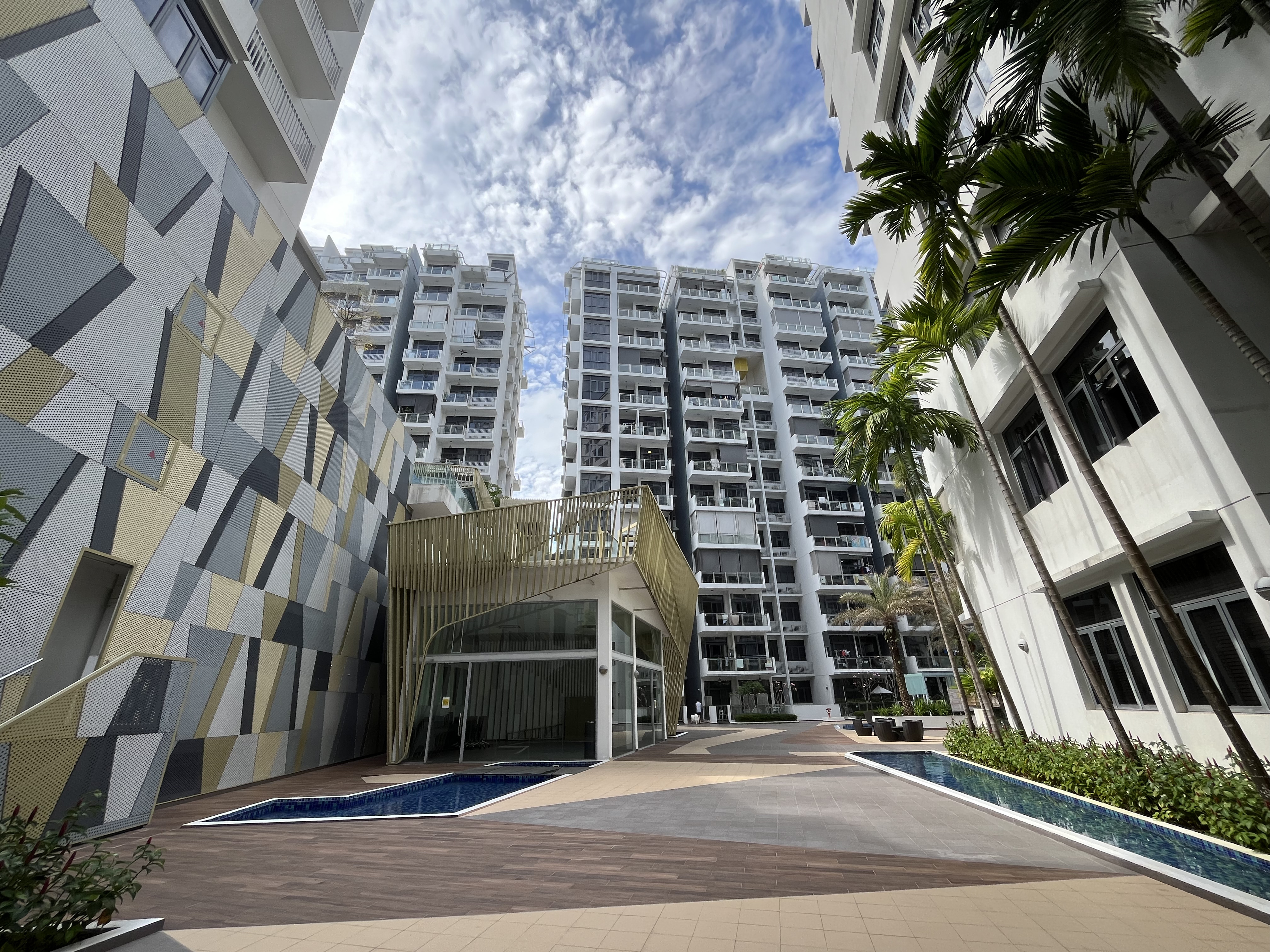
Condo Reviews I’ve Lived At Urban Vista In Tanah Merah For 6 Years: Here’s My Review Of What It’s Like To Live Next To An MRT
Latest Posts

Homeowner Stories What I Only Learned After My First Year Of Homeownership In Singapore

Singapore Property News Why More Land Doesn’t Automatically Fix Housing In Singapore

On The Market Here Are The Cheapest 4-Room HDB Flats in Central Singapore You Can Still Buy From $490K

Editor's Pick Should We Buy An Old 99-Year Leasehold Condo To Live In: Will It’s Value Fall When The Lease Runs Out?

Pro How A Once “Ulu” Condo Launched In 1997 Became A Top Performer

Editor's Pick I Reviewed A New Launch 4-Bedroom Penthouse At Beauty World

Property Market Commentary When Renting In Singapore Is The Smarter Move — And Buying Can Wait

Editor's Pick Why Singaporean Families Are Looking At This Landed Enclave From Around $4M

Singapore Property News Lentor’s First Condo Is Complete — The Early Profits May Surprise You

Editor's Pick A Wave Of New HDB Resale Supply Is Coming In 2026: Here’s Where To Find Them

Property Advice We Own A $800K 1-Bedder And A $1.1M 3-Bedder: Is It Possible To Upgrade To A 4-Bedder Condo?

On The Market These Are Some Of The Cheapest 5-Room HDB Flats Left In Central Singapore

Pro This 698-Unit Ang Mo Kio Condo Launched At The Wrong Time — And Still Outperformed Peers

Singapore Property News $281.2M in Singapore Shophouse Deals in 2H2025 — But That Number Doesn’t Tell the Full Story

Property Market Commentary 5 Key Features Buyers Should Expect in 2026 New Launch Condos


